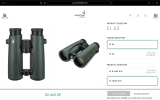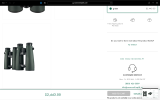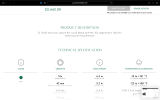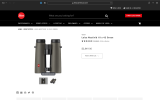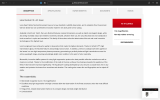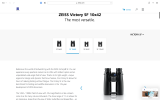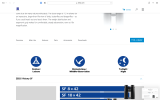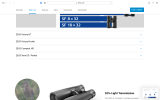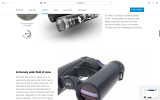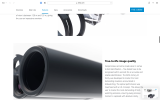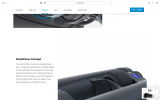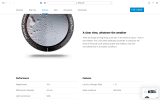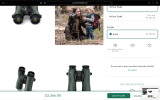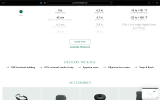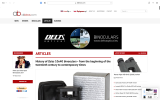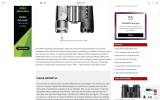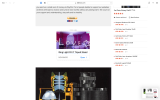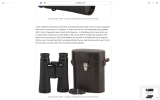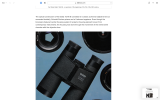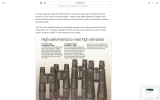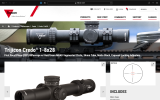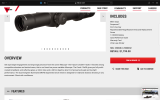A few thoughts about binocular choices...
Having been raised a Chamois hunter in the French Alps, I would as soon go hunting without a rifle as I would without binoculars...
When I was finally able to buy a proper pair of binoculars in the early eighties, the Zeiss 10x40 Dialyt B/GA T* already had a cult-like following among Alpine hunters. I did not even consider anything else. Besides, in those days Leica did not make binoculars, and Swarovski where light years behind in sport optics. To this day, I consider the Zeiss 10x40 BGA THE best binocular compromise (power / size / weight / optical quality / ruggedness).
I do not speak lightly, because I have since experimented...
Top, from the left: Leica Geovid 10x42 HD - B 3000; Vortex Vulture HD 15x56; Leica Trinovid HD 8x32; Steiner 20x80. Bottom, from the left: Zeiss 10x40 BG/A T*; Zeiss foldable compact 10x25 B; Swarovski SLC 8x30.
Magnification & objectives diameter...
For overall use, 10x40/42 is the best compromise. I am tempted to add: period!
... this here is what separates the men from the boys in optics hunting, coues deer hunting is an optics game,
I agree with
Bullthrower338 that unlimited open plains (or mountains) can require more magnification, and I agree that for THIS specific use (small critters like Coues Deer at very long glassing range) 15x is probably the best compromise, but this is already very specialized hunting.
Of course, in such bright light even Coke bottle bottom lenses will collect plenty of light, so you will not sort men from boys in that regard, but there will be tremendous differences in image clarity and - most critically - in sharpness and details resolution, between top glass and the rest.
15x56 (I have a pair of 15x56 Vortex HD) or even 20x80 (I have an older pair of 20x80 Steiner) are just too bulky and too heavy to carry around your neck all day on a stalking hunt for Mule Deer, Elk, or Kudu, never mind Mountain Goat, Chamois or Vaal Rhebok. Besides, they can only be used supported. Some creative positions work very well in the Alps, but not everywhere
 If the mountain is steep enough to do this, you can use 20x80 off hands, resting on your face, to determine if a Chamois (French) / Gams (German) is Class II or Class III. Your tag is likely valid for only one class, and you do not want to do the 3-hour climb without knowing...
Which brand (includes glass quality, mechanical construction, etc.)
If the mountain is steep enough to do this, you can use 20x80 off hands, resting on your face, to determine if a Chamois (French) / Gams (German) is Class II or Class III. Your tag is likely valid for only one class, and you do not want to do the 3-hour climb without knowing...
Which brand (includes glass quality, mechanical construction, etc.)
I agree with
BeeMaa.
Stick with the big 3 of Leica, Swaro or Zeiss and you will not be disappointed.
We all have our brand loyalties, but, factually, there is little to choose from, all three are outstanding:
Swarovski EL 10x42 - 90% light transmission - $2,443

www.swarovskioptik.com
Leica Noctivid 10x42 - 91% light transmission - $2,849
Explore the world of Leica. Browse our wide range of products from rangefinders to compact cameras, accessories, and lenses.

leicacamerausa.com
ZEISS Victory SF 10x42 - 92% light transmission - $2,700
The 120m / 1000m field of view with 10x magnification is like a dream come true for many nature enthusiasts.

www.zeiss.com
Will you distinguish 92% light transmission from 91% or 90% in full sunlight? The plain answer is "no". Only lab instruments can. Will 2% make a difference in the first 15 minutes of light at dawn, and the last 15 minutes of light at dusk? I doubt it... (see here under about 10% difference).
I agree with
Tanks that the shows are great places to compare size, weight, ergonomics, etc.
I need a new pair as well. Waiting for DSC/SCI shows this year to compare Leicas and Swarowskis.
but obviously any binocular will have great light transmission in a brightly lit convention hall...
Note that Swarovski also offers the NL 10x42 - 91% light transmission - $3,366, but is it worth to spend an additional $923 to gain 1% light transmission over the EL 10x42? Each can answer for their own...

www.swarovskioptik.com
I hate to say, and this is not bashing, but, factually, anything else, whether American, European or Asian, and including Leupold, Minox, Vortex, Nikon, etc. is inferior to the Big 3: Zeiss, Swarovski and Leica
top lines. This is a fact.
However..............
Do you need 90% light transmission to glass game effectively? Heck no! The Zeiss 10x40 BG/A T* introduced in 1979 that many of us still like so much transmit 80% light, and yes, I can see a difference if I go back & forth between them and the 2020 Leica 10x42 HD, but I pain to make the difference.
For info, this difference does come a little bit from the glass composition and the polishing of the lenses, but where progress has happened by leaps and bounds is in the composition and vapor deposition of the coatings...
This further comforts me in not caring much about 1% or 2% more or less light transmission between the Big 3, if I can barely see a 10% difference...
Currently most of people not especially knowledgeable in the matter of optics think that Porro prisms binoculars are outdated and roof prisms models are modern. It would be difficult to agree with such a statement because first roof models were launched almost precisely at the same time as Porro...

www.allbinos.com
Obviously, whatever is not waterproof and guaranteed "forever" nowadays, you might as well not consider, although, honestly, a life guarantee and exchange for new when you get back home is not much use on the moment if your optics fail in the African field, as some Vortex owners will tell you...
As for my own choices...
After more than 40 satisfied years with the Zeiss 10x40 BG/A T* I bought last year a Leica Geovid 10x42 HD - B 3000.
- Are they great? Heck yes!
- Are they brighter, clearer, sharper? Objectively, yes. Meaningfully? Well... I am not sure...
- Why did I buy them? I wanted the integrated laser range finder with Equivalent Horizontal Distance (EHR) accounting for altitude and shot angle.
- Would I buy them again? I am not sure. If I had realized that the Leica Geovid 10x42 HD - B 3000 are about the same size (see picture above) and are closer in weight (37 oz.) to the Swarovski 15x56 (42 oz.) than to the Zeiss 10x40 (26 oz.), I would probably have hesitated long and hard...
Let me give you a hint: for my own hunts I only ever used the Zeiss 10x40 BGA for everything, everywhere for 40+ years (when guiding friends in the French Alps I used the Steiner 20x80 to insure that I would not mislead them in shooting the wrong animal). I have used the Geovid 10x42 on my recent elephant hunt (not for the rangefinder ability obviously, but for the low light capabilities), and my first move coming back home was to buy a pair of Leica Trinovid HD 8x32, because the Swarovski SLC 8x30 my wife used were so much more adapted. In truth, I should use the Zeiss 10x40 BGA for DG, but Trinovid buying madness was on me... and objectively they are smaller and a bit lighter (23 oz.).
I bought on Black Friday sale the Vortex HD 15x56 on a whim (heck, why not, for $350 ?I?!), but they simply do not measure up to the Big 3. They are great to lay around the house and check a deer or elk strolling at the forest edge behind the house, but I will not take them to Africa or Alaska. There is truth in the good old "you get what you pay for"...
There might be a pair of Swarovski 15x56 SLC sometimes in my future for Arizona deserts, because 15x helps on the small stuff, far, and 15x56 can still be handheld with an elbow rest and are not too heavy/bulky (compared to 20x80) but that would be more another "want" than a "need"...







